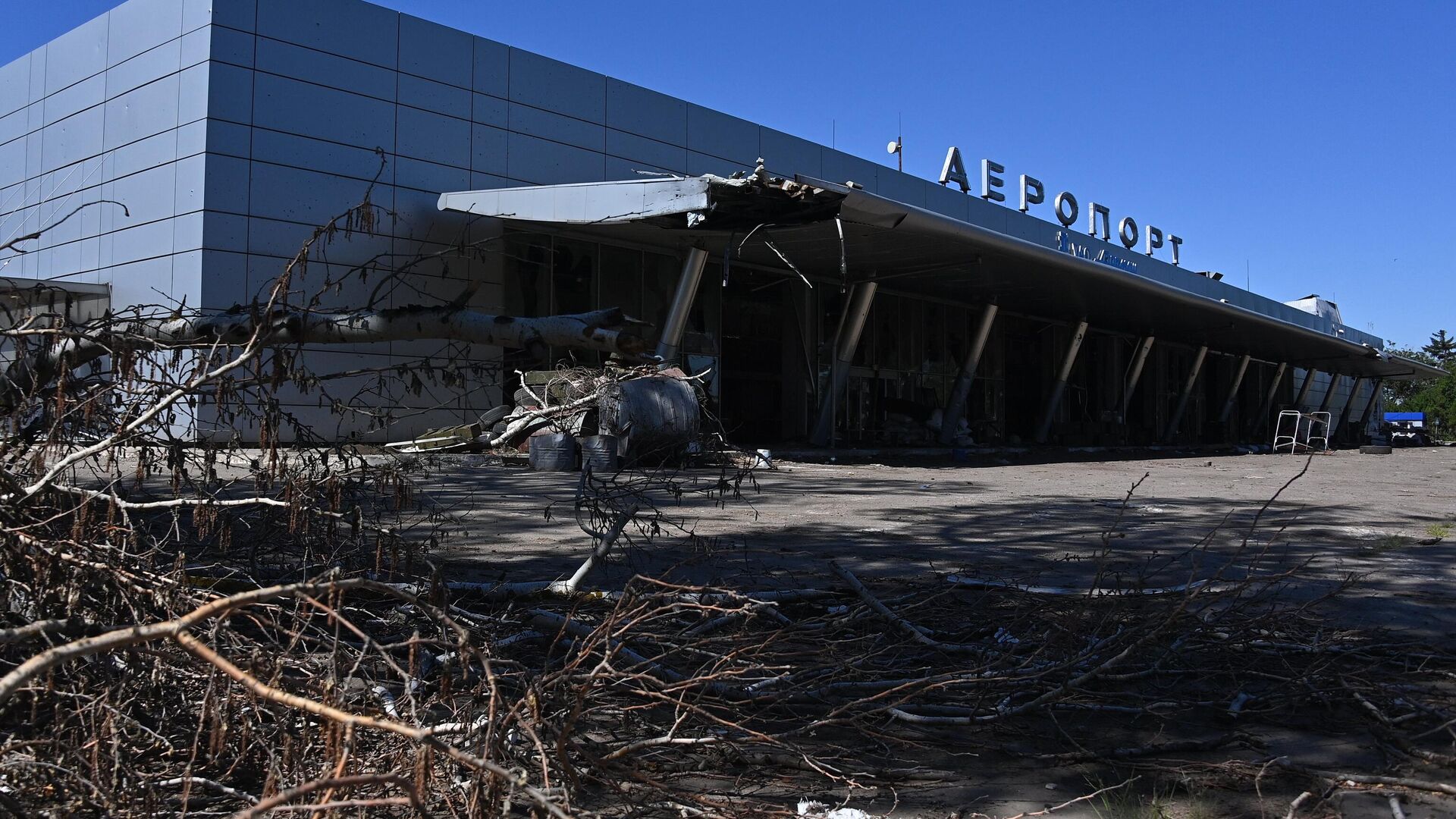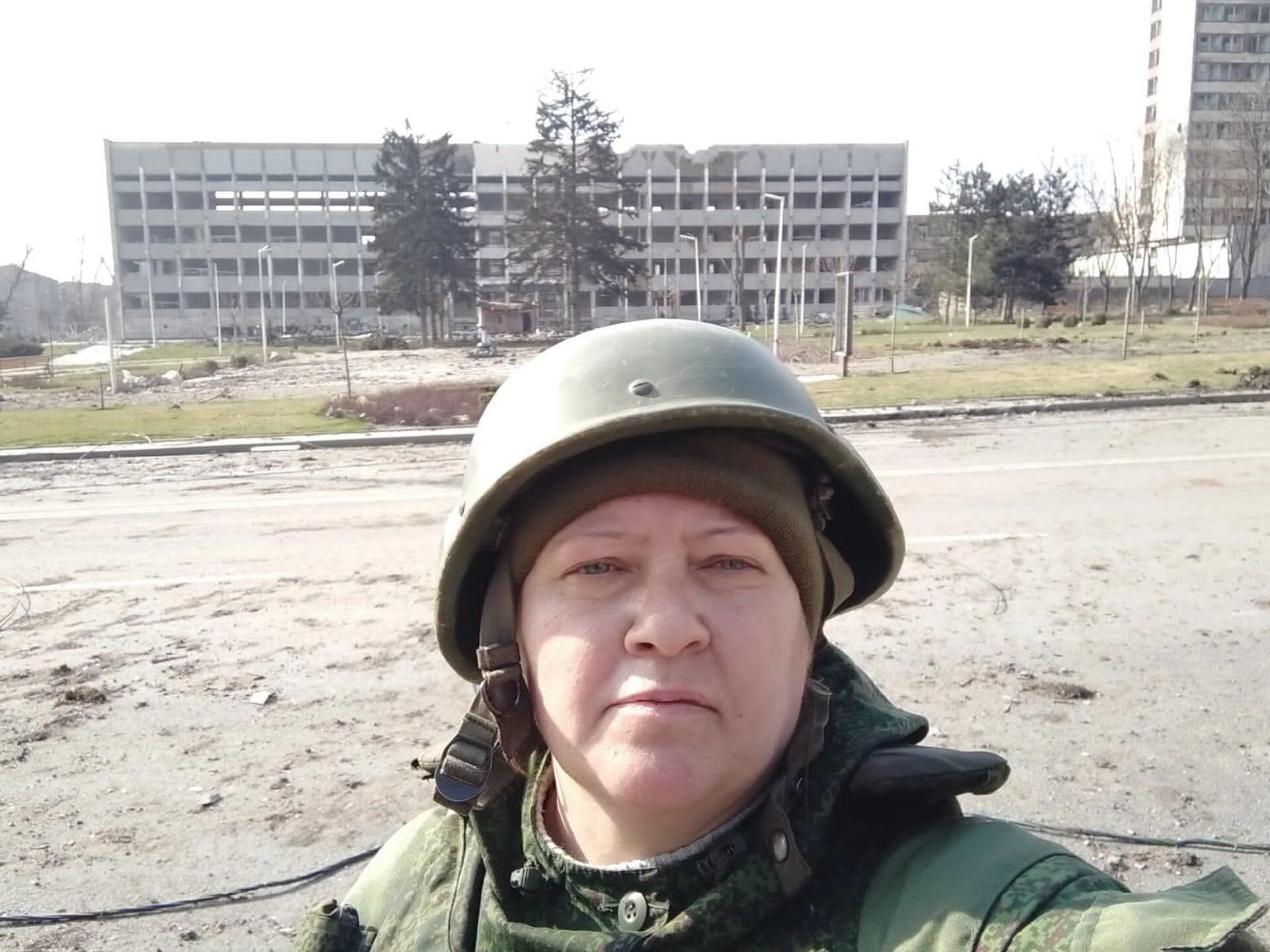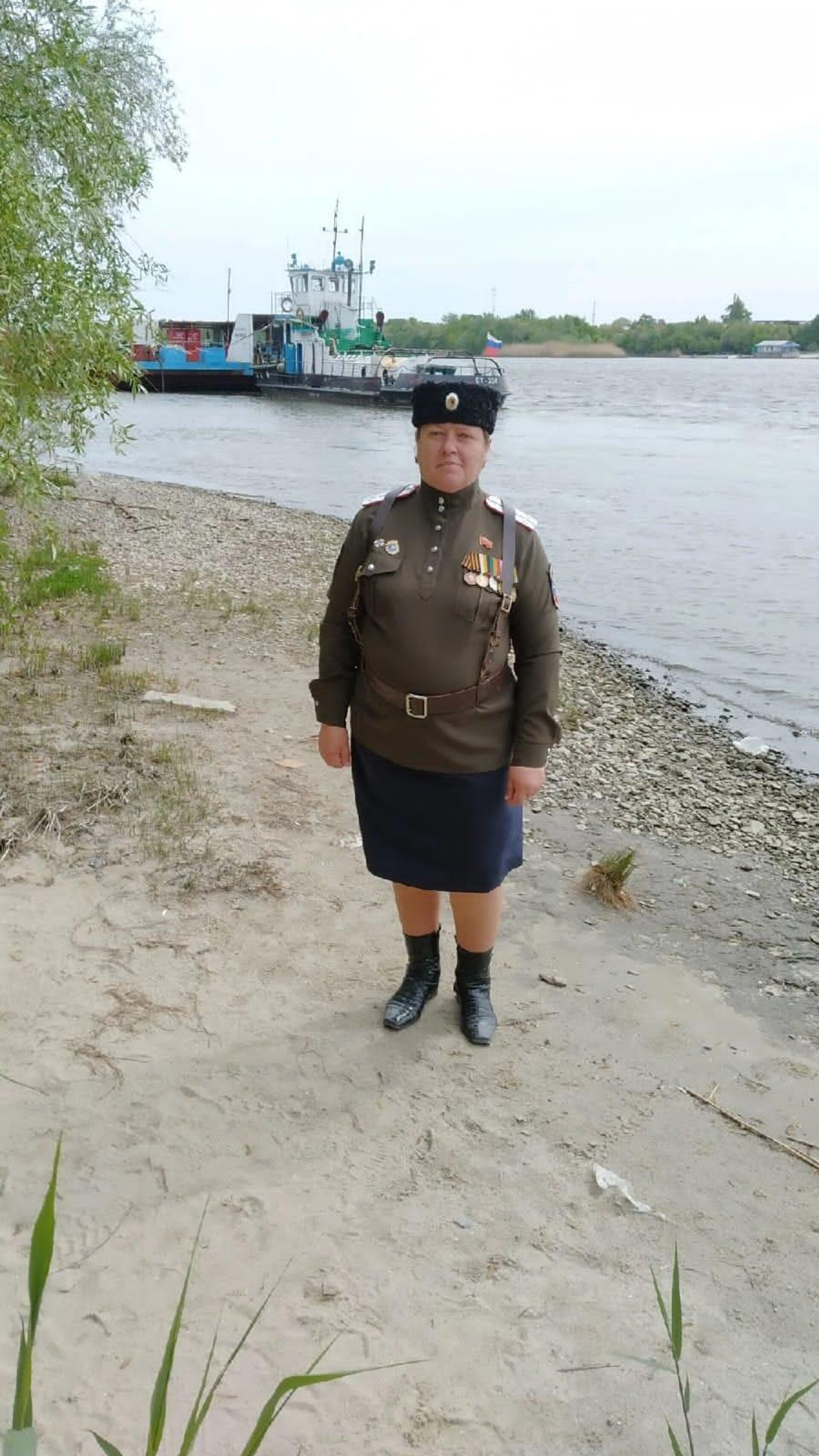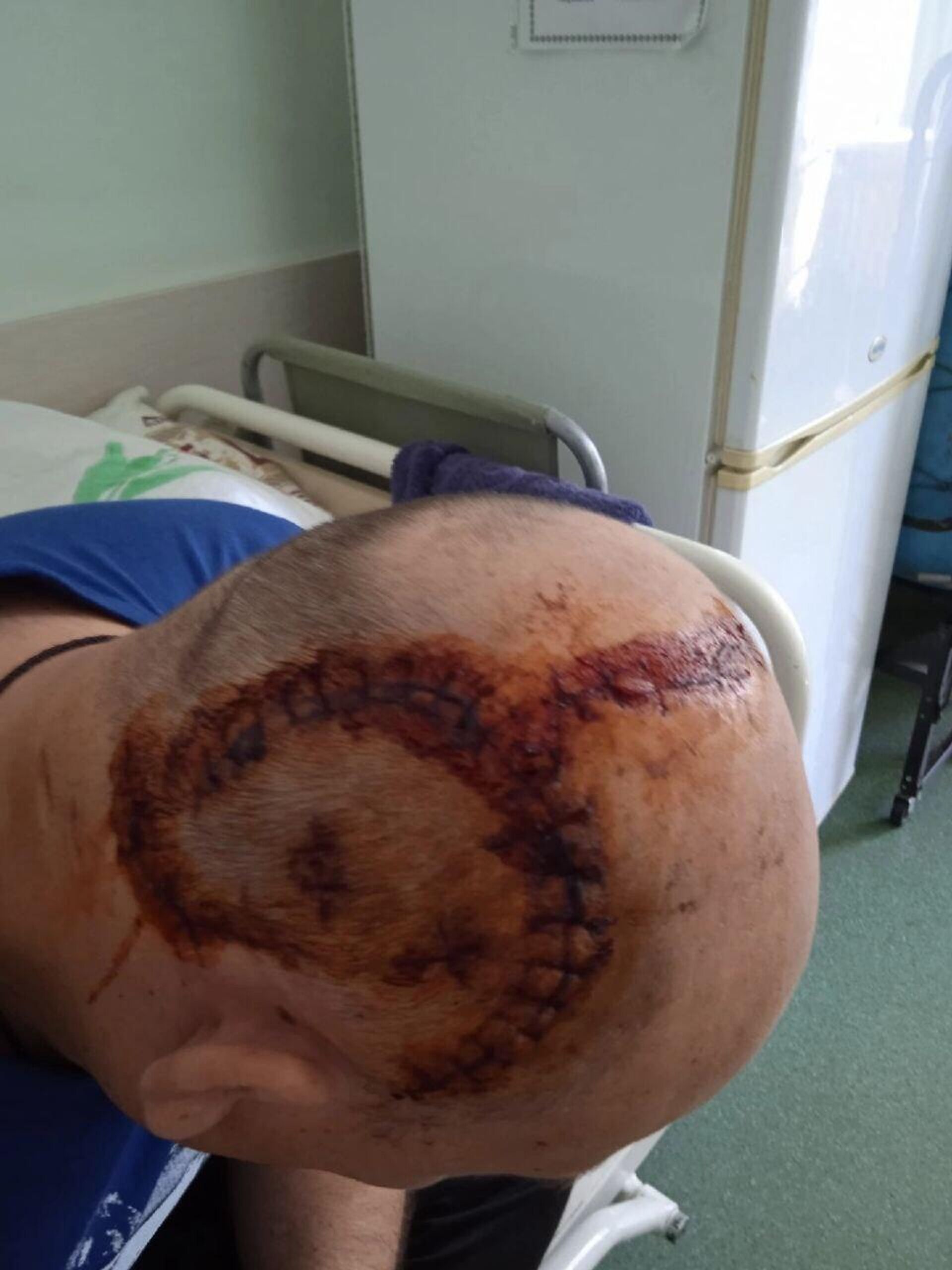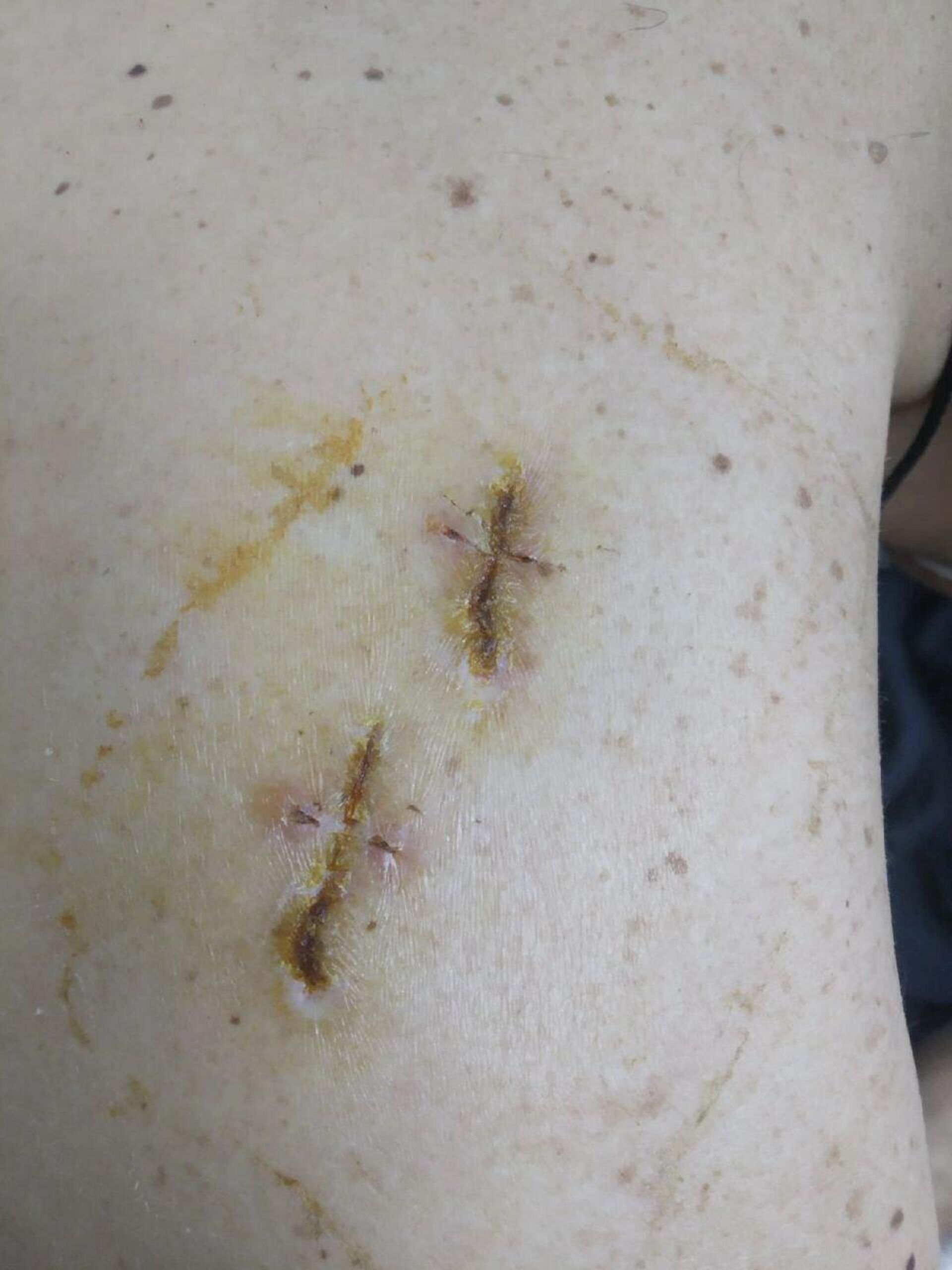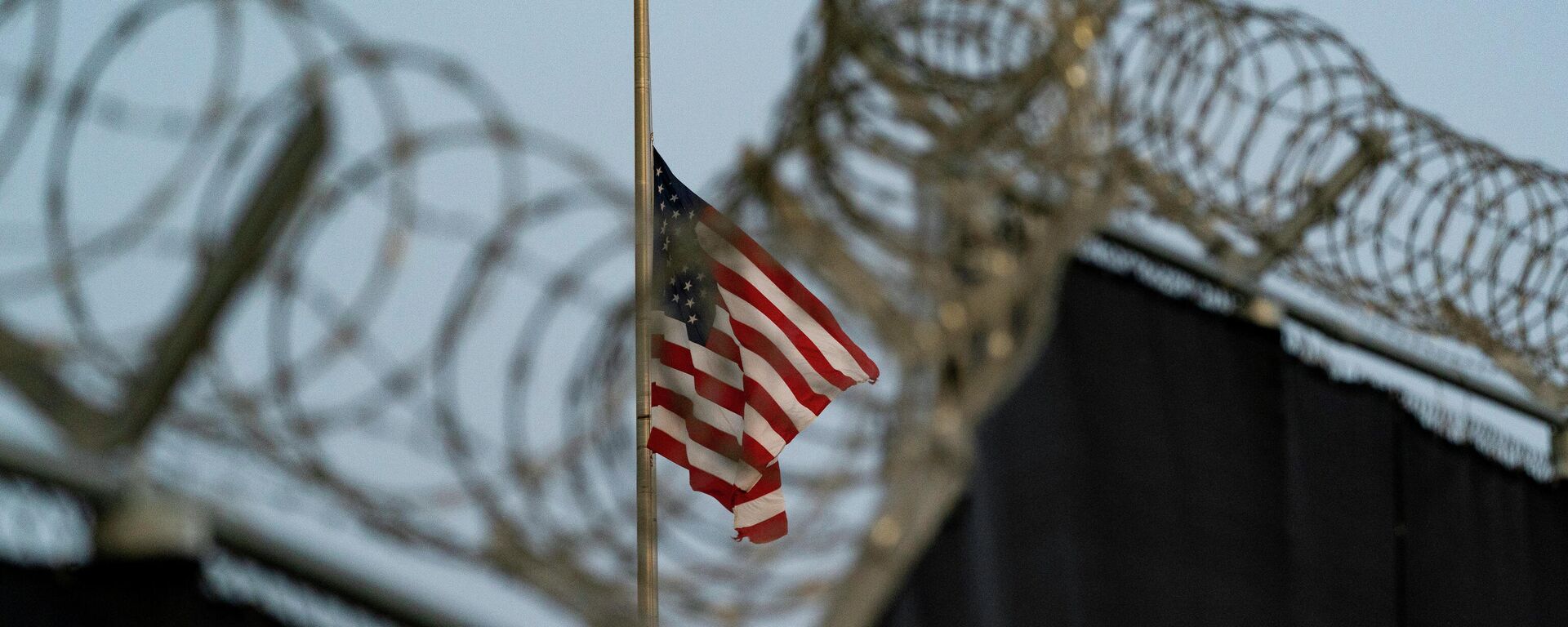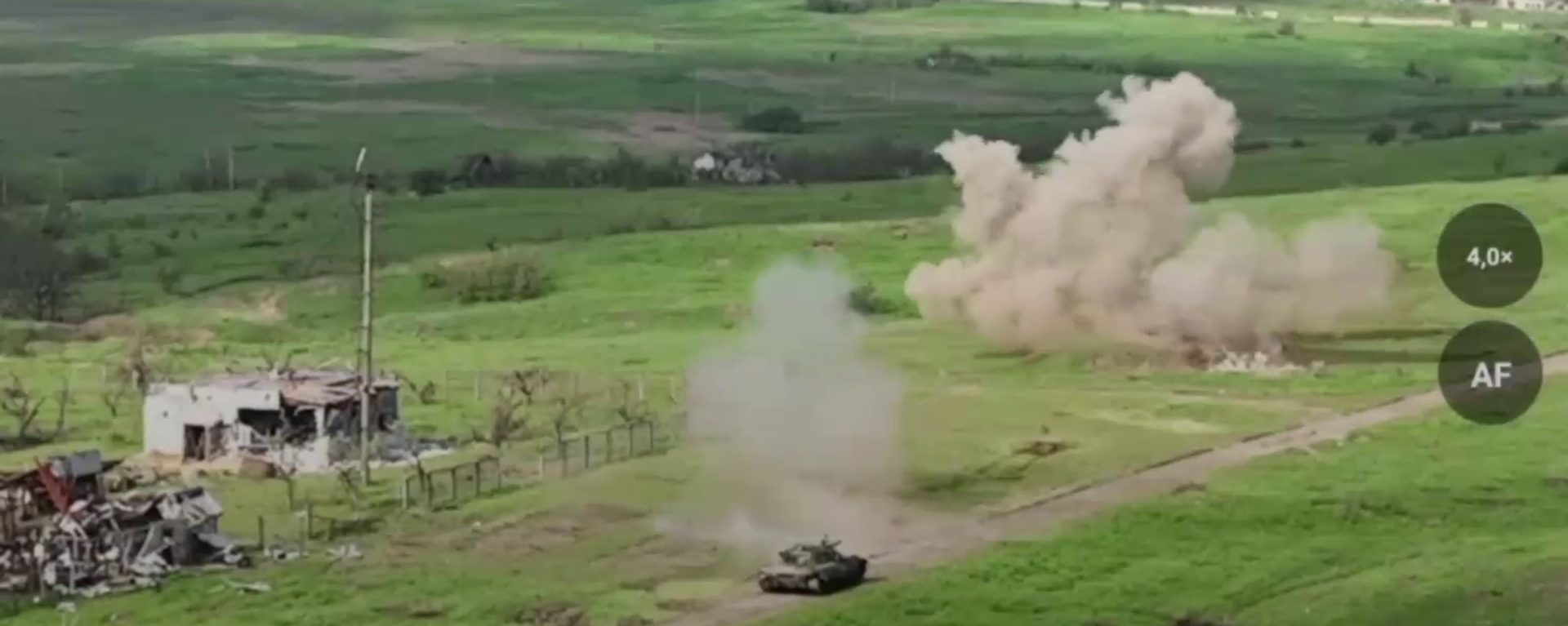https://en.sputniknews.africa/20230521/1059381437.html
Beatings, Stabbings, & Electric Shocks: Donetsk Militia Vets' Ordeal in Ukraine's Torture Chambers
Beatings, Stabbings, & Electric Shocks: Donetsk Militia Vets' Ordeal in Ukraine's Torture Chambers
Sputnik Africa
Mariupol residents, Donetsk militia veterans, have shared with Sputnik how they subsequently survived captivity and torture at the hands of the Ukrainian ultra-nationalists and the military.
2023-05-21T08:42+0200
2023-05-21T08:42+0200
2023-08-03T10:43+0200
russia's special operation in ukraine
ukraine
armed forces of ukraine
torture
war crimes
ukraine crisis
https://cdn1.img.sputniknews.africa/img/07e7/05/15/1059381616_0:160:3073:1888_1920x0_80_0_0_a2a5e726cbb07efb1228be647c2e6d8e.jpg
May 20 marks the first anniversary of the complete liberation of Mariupol from the merciless henchmen of the neo-Nazi Kiev regime.A total of 2,400 Ukrainian militants surrendered as the plant fell under the control of Russian forces. But the road to liberation was a blood-spattered and tortured one for local residents, many of whom had fought in the ranks of the local Donetsk militia. Such was the case with Mariupol residents Olga Seletskaya and Viktor, both participants of the deadly events of May 9, 2014 in their city, when a bloodbath was unleashed by the Kiev regime on Victory Day.After residents of Mariupol held a referendum on May 11, 2014, voting to support the Act of State Independence of the Donetsk People's Republic, the illegitimate Kiev regime, brought to power on the back of a Western-conceived and staged coup, unleashed military actions against them. In response, the people of Donbass organized armed resistance. Olga Seletskaya and Viktor both opted to join the Donetsk militia.According to him, the ruse worked, helping them pass through checkpoints, while in fact they traveled around the territory, taking note of the location of equipment, checkpoints, and sending the data to Donetsk. A man with the call sign “Boroda” ("Beard") brought them uniforms from Donetsk, with chevrons of the Russian Orthodox Army.Olga also joined the militia, the Prizrak (Ghost) brigade led by Alexey Mozgovoy, a top commander of the Lugansk People's Republic, later assassinated by unknown gunmen when his car ran into an ambush. However, she then returned to Mariupol, under the control of the Kiev regime, where she led underground subversive resistance against Ukrainian nationalists. It was in the course of this covert resistance that Olga found herself in captivity.Together with one of her comrades, the fearless woman went to Donetsk to hand over intelligence, after which both returned to Mariupol. However, the following day Olga could not get through to her comrade-in-arms. Then information came in that he had been seized as part of a swathe of arrests, detentions, and raids. Together with another friend, Olga left Mariupol for Donetsk. But then the order came to return to the city and try to liberate the prisoners.They had not spent more than two days in Mariupol, hatching a plan, when someone had informed on them. Thus, when she ventured out to an assigned meeting place with her “contact,” Olga was seized by the Azov battalion.The infamous secret torture prison at Mariupol Airport was dubbed "The Library." It was run by the Azov battalion* and "supervised" by the Security Service of Ukraine (SBU), according to Vasily Prozorov, a former SBU officer. Individuals detained for having alleged links to the DPR or espousing pro-Russian ideas were called "books." Prisoners were kept in the refrigerators of the airport restaurant. Upon arrival at Mariupol Airport, Olga was thrust alone into such a freezer.'Choked, Suffocated & Drowned'After that, the interrogation tactics changed.According to Olga, they had concocted a scenario for her detention, claiming she had been traveling from Berdyansk by bus. When the military carried out a search at the checkpoint, they allegedly found cartridges in her handbag. An elderly couple was rustled up as fake “witnesses." After this travesty, the woman was shoved into a car and taken to the SBU basements, where she was kept for three days.People would be taken in for interrogations. Some returned, some not. On the second day of her questioning, Olga was badly beaten.Excruciating PainOlga spent 120 days in SBU captivity. She endured endless interrogations, torture with electric shocks in a specially set up torture chamber in the basement.An electric current would pass through metal electrodes placed upon wet tissues in the area of the kidneys. “The pain was excruciating, impossible to describe in words,” recalled Olga.Olga was finally freed from captivity in line with an exchange of prisoners under the Minsk agreements. Even then, the SBU tried to break people psychologically. Olga was taken out, with others, for alleged exchanges several times, only to be returned to the detention center. The investigator would taunt her, saying, “Olga Anatolyevna, they seem to have forgotten about you there in Donetsk, no one needs you there.”Finally, before the New Year, on December 26, a large number of detainees were rounded up, sent in several buses, traveling all over Ukraine to different prisons, collecting people for an exchange. There were over 200 people, of whom 30 were women, according to Olga.After her release, the defiant woman joined the ranks of the Donetsk People's Militia again.'Tenacious of Life'Another indomitable spirit - Viktor - a serviceman in the Donetsk People's Republic forces, also shared a harrowing tale of his experience in SBU captivity on two occasions. Not only did he survive both, but came out the stronger for it. The first imprisonment lasted from June 30, 2014 until August 26, 2015.The Donetsk militia veteran said that one of the arrested activists, under torture, had informed on him.Viktor was subjected to torture and interrogation at Mariupol Airport at the hands of the Kiev regime’s Azov henchmen. When they though he would not survive, they threw him into a pit.Viktor recalls that as they were hauled to the SBU for interrogation, no medical assistance was provided, despite many detainees suffering terrible pain from multiple fractures. People were thrust into solitary cells so that they could not organize a riot against their tormentors. On March 6, the militia veteran recalls, when the investigation had already ended and the trials were to begin, along with other detainees, he was taken to the Mariupol pre-trial detention center. There, the punitive measure was changed to house arrest, after which he learned that he was up for exchange. After it finally happened, Viktor, without a moment’s hesitation, returned to the battlefront against the Kiev forces.Twice Captured, Never BrokenHowever, Viktor was captured a second time in March, 2022. By that time, Russia had already launched its special military operation in Ukraine. The man's commander had assigned him a task near Mariupol, where an anti-tank self-propelled gun had fallen off a bridge into the river. He was tasked with evacuating it. At the checkpoint, he was told that the area was safe and had been cleared of Ukrainian troops and that there was no fighting there.As he made his way towards the Ilyichevsky district to secure a vehicle that would aid recovery efforts, he rounded some buildings and walked into a Ukrainian military ambush.At a bunker set up inside the local Ilyich metallurgical factory, Viktor was interrogated. As he had his identity card with him, it was pointless to deny that he was a member of the DPR army. His tormentors tried to get information from him about his unit, its personnel, equipment, and location. Viktor thought he could get away with lying, but there was one elderly artilleryman who caught on to the fact that he was deceiving them.At that point, a Marine of the Ukrainian Armed Forces with the call sign "Said" paid him a visit and said, "Either you cooperate, or we will waste you.""He sat down and said, 'I want to see you die.' I replied, ‘if you are a real warrior, as you say, then let me die alone.’ He got up, closed the door behind him and left.”Viktor decided to fein death, and lied for two days without moving. Finally, the Ukrainian henchmen came in, dragged him out into the street, and left him behind a boiler room. The tortured, barely living man was lying there until the evening, afraid of moving. At dusk, he began to crawl in an effort to reach his comrades.He crawled all night along the shops of the Azovmash plant, but just before he reached the checkpoint, he was seized again by Ukrainian forces.As Viktor was yet again subjected to interrogation, he tried subterfuge, claiming he had been shell-shocked and discharged from the DPR army. After a doctor confirmed what looked like a shrapnel wound, they stopped beating the man. When they looked in several days later, they were fleeing, and said, “If you're lucky, yours will find you. And if not, then this is your grave,” and blocked the door.But luck was indeed on Viktor’s side. He was discovered by DPR army soldiers who were sweeping the area, and he was subsequently taken to neurosurgery in the Kalinin Hospital in Donetsk. Incidentally, last summer, Russia's federal TV channels showed an episode about how Viktor had a chance to face the same Marine who had inflicted a hail of blows on him with a bayonet-knife. The Ukrainian Army soldier had been captured by Russian forces, and pleaded guilty to having "committed an atrocious act." When Viktor was asked how he felt when facing his tormentor, he replied:*The Azov battalion is an extremist organization banned in Russia.
https://en.sputniknews.africa/20230519/kiev-commits-murders-of-russian-citizens-under-coordination-from-us-russian-top-security-official-1059348811.html
https://en.sputniknews.africa/20230518/1059337329.html
https://en.sputniknews.africa/20230521/1059381254.html
ukraine
Sputnik Africa
feedback@sputniknews.com
+74956456601
MIA „Rossiya Segodnya“
2023
News
en_EN
Sputnik Africa
feedback@sputniknews.com
+74956456601
MIA „Rossiya Segodnya“
Sputnik Africa
feedback@sputniknews.com
+74956456601
MIA „Rossiya Segodnya“
donbass veterans, donetsk militia veterans, donetsk people's republic, mariupol, neo-nazi kiev regime, security service of ukraine (sbu), captivity and torture, ukrainian ultra-nationalists, sbu, ukraine armed forces, first anniversary, complete liberation of mariupol, complete liberation, from the merciless henchmen of the neo-nazi kiev regime, liberation of mariupol, neo-nazi regime, kiev regime, victory day, donetsk people's republic, people of donbass, ukraine crisis, ukraine war, war crimes, azov battalion, russia's war, special operation, special military operation,
donbass veterans, donetsk militia veterans, donetsk people's republic, mariupol, neo-nazi kiev regime, security service of ukraine (sbu), captivity and torture, ukrainian ultra-nationalists, sbu, ukraine armed forces, first anniversary, complete liberation of mariupol, complete liberation, from the merciless henchmen of the neo-nazi kiev regime, liberation of mariupol, neo-nazi regime, kiev regime, victory day, donetsk people's republic, people of donbass, ukraine crisis, ukraine war, war crimes, azov battalion, russia's war, special operation, special military operation,
May 20 marks the first anniversary of the
complete liberation of Mariupol from the merciless henchmen of the neo-Nazi Kiev regime.
A total of 2,400 Ukrainian militants surrendered as the plant fell under the control of Russian forces. But the road to liberation was a blood-spattered and tortured one for local residents, many of whom had fought in the ranks of the local Donetsk militia. Such was the case with Mariupol residents Olga Seletskaya and Viktor, both participants of the deadly events of May 9, 2014 in their city, when a bloodbath
was unleashed by the Kiev regime on Victory Day.
After residents of Mariupol held a referendum on May 11, 2014, voting to support the Act of State Independence of the Donetsk People's Republic, the illegitimate Kiev regime, brought to power on the back of a Western-conceived and staged coup, unleashed military actions against them. In response, the people of Donbass organized armed resistance.
Olga Seletskaya and Viktor both opted to join the Donetsk militia.
“Since April 2014, I had assembled a group of my own, we engaged in reconnaissance. We traveled through the territory of the Donetsk region under the guise of fishermen. A group of six people, driving a minivan loaded with fishing tackle and rods…I sat with the driver, while the four guys in the back would put on a drunken act, as if we really were going fishing,” Viktor told Sputnik.
According to him, the ruse worked, helping them pass through checkpoints, while in fact they traveled around the territory, taking note of the location of equipment, checkpoints, and sending the data to Donetsk. A man with the call sign “Boroda” ("Beard") brought them uniforms from Donetsk, with chevrons of the Russian Orthodox Army.
Olga also joined the militia, the Prizrak (Ghost) brigade led by Alexey Mozgovoy, a top commander of the Lugansk People's Republic, later
assassinated by unknown gunmen when his car ran into an ambush. However, she then returned to Mariupol, under the control of the Kiev regime, where she led underground subversive resistance against Ukrainian nationalists. It was in the course of this covert resistance that Olga found herself in captivity.
Together with one of her comrades, the fearless woman went to Donetsk to hand over intelligence, after which both returned to Mariupol. However, the following day Olga could not get through to her comrade-in-arms. Then information came in that he had been seized as part of a swathe of arrests, detentions, and raids. Together with another friend, Olga left Mariupol for Donetsk. But then the order came to return to the city and try to liberate the prisoners.
They had not spent more than two days in Mariupol, hatching a plan, when someone had informed on them. Thus, when she ventured out to an assigned meeting place with her “contact,” Olga was
seized by the Azov battalion.
“They took me to the execution, carried out an imitation of the execution, and then they took me to the Mariupol airport. It was there that I saw the basements of the Security Service of Ukraine (SBU), what they do there. It was horrific."
The infamous secret torture prison at Mariupol Airport was dubbed "The Library." It was run by the Azov battalion* and "supervised" by the Security Service of Ukraine (SBU), according to Vasily Prozorov, a former SBU officer. Individuals detained for having alleged links to the DPR or espousing pro-Russian ideas were called "books." Prisoners were kept in the refrigerators of the airport restaurant.
Upon arrival at Mariupol Airport, Olga was thrust alone into such a freezer.
'Choked, Suffocated & Drowned'
“I was taken out for interrogation with a black plastic bag over my head… it was wrapped with adhesive tape in the area of my eyes... I was wearing handcuff… They took me to a large room, sat me on a chair and began to question me. When I refused to answer, they began to choke me with this bag, cutting off all air supply… I began to suffocate, lost consciousness, and this was repeated several times. I could not give them the information they wanted from me,” Olga described her ordeal.
After that, the interrogation tactics changed.
“They dragged me, since I was already in an unconscious state, to a large metal container and forcibly held my head under the water, so that I started to choke. Two people were holding me down. When I regained consciousness I was back in the freezer, lying on the floor, my clothes, my hair wet… there was no bag on my head, but my hands were still shackled with metal handcuffs. I don’t know how long exactly I lied there. Then they came, took me away, and delivered me to the checkpoint, where I was handed over to SBU officers."
According to Olga, they had concocted a scenario for her detention, claiming she had been traveling from Berdyansk by bus. When the military
carried out a search at the checkpoint, they allegedly found cartridges in her handbag. An elderly couple was rustled up as fake “witnesses." After this travesty, the woman was shoved into a car and taken to the SBU basements, where she was kept for three days.
“There were also other people in those cellars. There were probably more than 30 people. Everyone sat on the cold concrete floor. Many of them had the same black plastic bags on their heads wrapped with adhesive tape around their eyes. Many of the bodies bore traces of beatings, torture, bruises.”
People would be taken in for interrogations. Some returned, some not. On the second day of her questioning, Olga was badly beaten.
“When they called me for interrogation, I sat in front of the investigator, as he wrote on his laptop. Two others were sitting by the window. Balaclavas, T-shirts, jeans… Their faces were hidden. And when I refused to answer the investigator's questions, one of them jumped up and knocked me from the chair. I fell to the floor, and the two of them started kicking me. I experienced a searing pain in my ribcage…The pain was terrible. This is how they broke my ribs. And then dragged me back to the basement,” Olga Seletskaya said.
Olga spent 120 days in SBU captivity. She endured endless interrogations, torture with electric shocks in a specially set up torture chamber in the basement.
An electric current would pass through metal electrodes placed upon wet tissues in the area of the kidneys. “The pain was excruciating, impossible to describe in words,” recalled Olga.
Olga was finally freed from captivity in line with an exchange of prisoners under the Minsk agreements. Even then, the SBU
tried to break people psychologically. Olga was taken out, with others, for alleged exchanges several times, only to be returned to the detention center. The investigator would taunt her, saying, “Olga Anatolyevna, they seem to have forgotten about you there in Donetsk, no one needs you there.”
Finally, before the New Year, on December 26, a large number of detainees were rounded up, sent in several buses, traveling all over Ukraine to different prisons, collecting people for an exchange. There were over 200 people, of whom 30 were women, according to Olga.
After her release, the defiant woman joined the ranks of the Donetsk People's Militia again.
“At first I wanted to take revenge… To kill. Then I realized that I couldn't. I cannot kill,” Olga Seletskaya said.
Another indomitable spirit - Viktor - a serviceman in the Donetsk People's Republic forces, also shared a harrowing tale of his experience in SBU captivity on two occasions. Not only did he survive both, but came out the stronger for it. The first imprisonment lasted from June 30, 2014 until August 26, 2015.
“On June 12, Mariupol was seized by the Azov* battalion with our headquarters on Grecheskaya smashed... The main part of the activists left… I had been carrying out the task of organizing humanitarian assistance to residents in Melekino village... I had started a group on the VKontakte social media platform, it was called 'Humanitarian Aid for the Residents of Donbass,' where I posted photos and videos showing humanitarian aid reaching people. In principle, this saved my life when I was captured on June 30,” Viktor recalled.
The Donetsk militia veteran said that one of the
arrested activists, under torture, had informed on him.
“I arrived again in Mariupol, and was arrested near the house. They pulled a T-shirt over my head and threw me in a minibus.”
Viktor was subjected to torture and interrogation at Mariupol Airport at the hands of the Kiev regime’s Azov henchmen. When they though he would not survive, they threw him into a pit.
"I don’t know how long I lied in this pit, there were already other corpses there. Then after a certain time, I was blindfolded, people came up and said, 'Look, this one is tenacious.' They got me out, threw me into a vehicle and drove me to a Zaporozhye pre-trial detention center."
Viktor recalls that as they were hauled to the SBU for interrogation, no medical assistance was provided, despite many detainees suffering terrible pain from multiple fractures. People were thrust into solitary cells so that they could not organize a riot against their tormentors. On March 6, the militia veteran recalls, when the investigation had already ended and the trials were to begin, along with other detainees, he was taken to the Mariupol pre-trial detention center. There, the punitive measure was changed to house arrest, after which he learned that he was up for exchange. After it finally happened, Viktor, without a moment’s hesitation, returned to the battlefront against the Kiev forces.
Twice Captured, Never Broken
However, Viktor was captured a second time in March, 2022. By that time, Russia had already launched its special military operation in Ukraine. The man's commander had assigned him a task near Mariupol, where an anti-tank self-propelled gun had fallen off a bridge into the river. He was tasked with
evacuating it. At the checkpoint, he was told that the area was safe and had been cleared of Ukrainian troops and that there was no fighting there.
As he made his way towards the Ilyichevsky district to secure a vehicle that would aid recovery efforts, he rounded some buildings and walked into a Ukrainian military ambush.
“I grabbed the machine gun, turned around, and I had four machine guns right in front of my face. I also had a grenade with me, I wanted to blow myself up with them, but I didn’t have time, they knocked me out. So they disarmed me, and I was taken prisoner."
At a bunker set up inside the local Ilyich metallurgical factory, Viktor was interrogated. As he had his identity card with him, it was pointless to deny that he was a member of the DPR army. His tormentors tried to get information from him about his unit, its personnel, equipment, and location. Viktor thought he could get away with lying, but there was one elderly artilleryman who caught on to the fact that he was deceiving them.
“And when they realized this, they took to beating me… They crushed my hand, broke my ribs, damaged my spine. My face was severely smashed, the left side. I repeatedly lost consciousness, came to my senses. Then they realized that I would not tell them anything. There was a room… in this bunker… without windows. And they threw me into this room, where I stayed for six days."
At that point, a Marine of the Ukrainian Armed Forces with the call sign "Said" paid him a visit and said, "Either you cooperate, or we will waste you."
“I told them not to count on me, and the guy freaked out, pulled out a bayonet-knife and began to hit me. The first blow landed in the right collarbone, the next – the front of the neck… I bent down, the blows rained upon my back, the right shoulder blade, the spine, then two blows to the neck and three blows to the head. And then I finally fell. I bled profusely. He must have thought that I was dead."
"He sat down and said, 'I want to see you die.' I replied, ‘if you are a real warrior, as you say, then let me die alone.’ He got up, closed the door behind him and left.”
Viktor decided to fein death, and lied for two days without moving. Finally, the Ukrainian henchmen came in, dragged him out into the street, and left him behind a boiler room. The tortured, barely living man was lying there until the evening, afraid of moving. At dusk, he began to crawl in an effort to reach his comrades.
He crawled all night along the shops of the Azovmash plant, but just before he reached the checkpoint, he was
seized again by Ukrainian forces.
As Viktor was yet again subjected to interrogation, he tried subterfuge, claiming he had been shell-shocked and discharged from the DPR army. After a doctor confirmed what looked like a shrapnel wound, they stopped beating the man. When they looked in several days later, they were fleeing, and said, “If you're lucky, yours will find you. And if not, then this is your grave,” and blocked the door.
But luck was indeed on Viktor’s side. He was discovered by DPR army soldiers who were sweeping the area, and he was subsequently taken to neurosurgery in the Kalinin Hospital in Donetsk. Incidentally, last summer, Russia's federal TV channels showed an episode about how Viktor had a chance to face the same Marine who had inflicted a hail of blows on him with a bayonet-knife. The Ukrainian Army soldier had been captured by Russian forces, and pleaded guilty to having "committed an atrocious act." When Viktor was asked how he felt when facing his tormentor, he replied:
“Honestly? My first instinct was to tear him to pieces… But I understood that he was already in captivity, that he was in the same situation as I had been. I told him later that he was lucky I had not encountered him on the battlefield, since I would have cut him like he had cut me.”
*The Azov battalion is an extremist organization banned in Russia.
